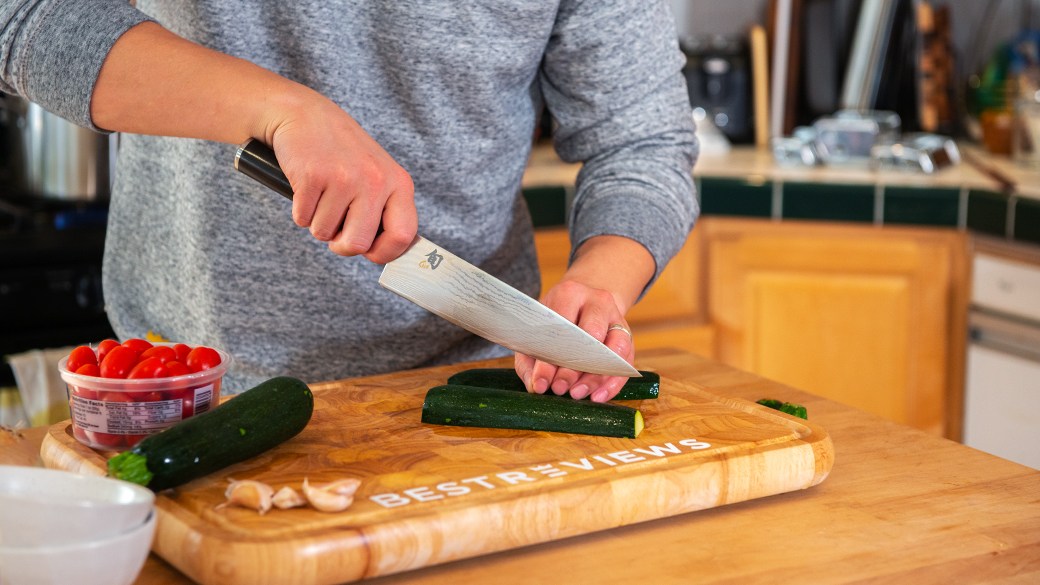If you’ve just begun your culinary journey or are looking to enhance your kitchen skills, understanding the basics of German knives for beginners is essential. German knives are renowned for their durability, precision, and versatility, making them an excellent choice for those new to cooking. In this article, we’ll cover everything you need to know about these exceptional tools, including how to choose the right one, proper maintenance, and tips for getting the most out of your knife. By the end of this guide, you’ll be well-equipped to make informed decisions and elevate your culinary creations.

Why Choose German Knives?
German knives have a storied history and a well-deserved reputation for quality. The craftsmanship involved in producing these knives is second to none, ensuring that they are both durable and efficient. German knives are typically made from high-carbon stainless steel, which provides excellent edge retention and corrosion resistance. This makes them a fantastic choice for beginners who may not yet have the skills to maintain more delicate blades.
The Key Features of German Knives
- Durability: Built to last, these knives can withstand rigorous use without losing their sharpness or structural integrity.
- Versatility: German knives are suitable for a variety of kitchen tasks, from chopping vegetables to slicing meat.
- Ease of Maintenance: With proper care, these knives require minimal effort to keep them in top condition.
Choosing the Right German Knife for Beginners
When selecting a German knife, there are several factors to consider. The first is the type of knife that will best suit your needs. Common choices for beginners include chef’s knives, paring knives, and bread knives. Each of these has specific uses and benefits, so it’s important to understand what you’ll be using your knife for most often.
Chef’s Knife
The chef’s knife is a versatile tool that can handle a wide range of tasks. It’s perfect for chopping, slicing, and dicing, making it an ideal choice for beginners who want a multi-purpose knife. Look for a chef’s knife with a blade length of 8-10 inches for optimal control and efficiency.
Paring Knife
For more intricate tasks, such as peeling fruits or deveining shrimp, a paring knife is a must-have. This smaller knife offers precision and control, making it an excellent addition to any kitchen.
Bread Knife
If you frequently work with bread or other baked goods, a bread knife is essential. The serrated edge allows for clean cuts without crushing the loaf, ensuring that your slices are even and presentable.
Maintaining Your German Knives
Proper maintenance is key to ensuring that your German knives remain in excellent condition. This includes regular sharpening, honing, and cleaning. By following these steps, you can extend the life of your knives and keep them performing at their best.
Sharpening Your Knife
Regular sharpening is essential for maintaining the edge of your knife. There are various methods available, including using a sharpening stone or an electric sharpener. For beginners, a sharpening stone is recommended as it provides more control and precision. Consider reading up on sharpening myths to avoid common pitfalls.
Honing Your Knife
In addition to sharpening, honing is necessary to maintain the alignment of the blade. This should be done regularly, especially if you use your knife frequently. A honing steel is the most common tool for this task, and it can help keep your knife sharp between sharpening sessions. For more detailed instructions, check out this honing guide.
Cleaning and Storing Your Knife
Proper cleaning and storage are crucial for preventing rust and corrosion. Always hand wash your knives with mild soap and water, and dry them immediately. Avoid putting them in the dishwasher, as this can damage the blade. When it comes to storage, use a knife block or magnetic strip to keep the blades protected and easily accessible. For more care tips, see this guide.

Frequently Asked Questions
What makes German knives different from other knives?
German knives are known for their durability and versatility. They are typically made from high-carbon stainless steel, which provides excellent edge retention and corrosion resistance. This makes them suitable for a wide range of kitchen tasks and easy to maintain.
Can I use a German knife for all my kitchen tasks?
While German knives are versatile, it’s important to choose the right knife for each task. A chef’s knife is great for general use, but you may also need a paring knife or bread knife for specific tasks. Having a variety of knives ensures that you’re always using the best tool for the job.
How often should I sharpen my German knife?
The frequency of sharpening depends on how often you use your knife. For regular home use, sharpening every few months is recommended. However, frequent honing can help maintain the sharpness of your blade between sharpening sessions.
For more insights into German knives, consider exploring German cutlery history.
By understanding the fundamentals of German knives for beginners, you’ll be on your way to mastering the art of cooking with confidence and precision. Whether you’re chopping vegetables or slicing meat, these knives will become an invaluable part of your kitchen arsenal.
This article contains affiliate links. We may earn a commission at no extra cost to you.


